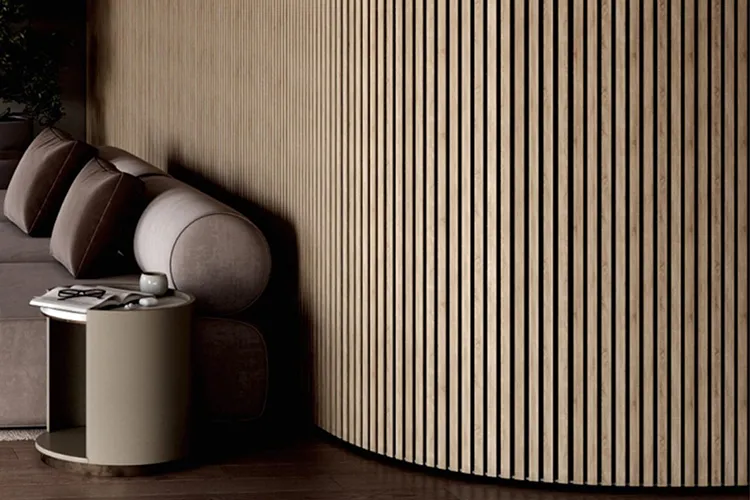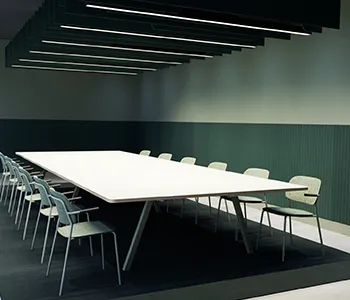Avoid your inquiry is delay response, please enter your WhatsApp/Skype along with the message, so we can contact you at the very first time.
We will reply you within 24 hours. If for urgent case, please add WhatsApp/WeChat: +86-13678899682 directly.
Noise problems in our homes, offices, and public spaces have become a big issue. Too much noise makes it hard to focus, lowers work output, and creates stress. The noise from next door, the echo in meeting rooms, and the loud sounds in restaurants all make our days worse and hurt our health.
When noise is bad, people can’t sleep well, get annoyed, and find it hard to work. In fact, 68% of office workers say noise is their biggest problem at work . But what can we do? Many think any panel on a wall will fix noise issues. This is not true. We need to know the real facts about sound and how to stop it.
First, let’s clear up a big mistake many people make. Acoustic panels and soundproofing are not the same thing:
This is very important to know! Putting acoustic panels on your wall will help with echo but won’t stop your neighbor’s TV sounds .
Key Differences Between Absorption and Blocking
------------------------------------------------
Absorption (Echo Control) | Sound Blocking
------------------------------------------------
Reduces sound reflection | Prevents sound transmission
Improves room acoustics | Creates barriers between spaces
Measured by NRC rating | Measured by STC rating
Uses soft, porous materials | Uses mass and decoupling
------------------------------------------------
PET acoustic panels have become very popular for sound control. These panels are made from recycled plastic bottles and offer great sound absorption with eco-friendly benefits .

Beien Panel, a top maker in China, has worked hard to make PET acoustic panels that meet the highest world standards with CE, SGS, FSC, and BSCI certifications.
| Material | NRC Rating | Best Use Case | Eco-Rating |
|---|---|---|---|
| PET Panels | 0.80-0.85 | Offices, Schools | ★★★★★ |
| Mineral Wool | 0.90-1.05 | Recording Studios | ★★★ |
| Standard Foam | 0.60-0.75 | Budget Solutions | ★★ |
| Wood Acoustic | 0.65-0.75 | Decorative Spaces | ★★★★ |
Room acoustics create many problems that the right panels can fix:
These issues make it hard to talk, listen, work, or enjoy music. In meeting rooms, people miss 30-50% of what’s said due to bad acoustics . This costs businesses money and time.
Not all acoustic panels work the same. Here are the main types:
PET acoustic panels are made from recycled plastic bottles and shaped into sound-absorbing boards. They have an NRC rating up to 0.85, which means they absorb up to 85% of sound waves that hit them .
Best uses: Offices, schools, restaurants, and homes where eco-friendly options matter.
Wood acoustic panels combine good looks with sound control. These panels use natural wood or wood-look finishes on sound-absorbing cores.
Best uses: High-end offices, hotels, homes, and places where looks matter as much as function.

These traditional panels use mineral wool or fiberglass cores wrapped in fabric. They offer excellent absorption but may cost more than PET options.
Best uses: Recording studios, home theaters, and places needing maximum sound control.
Case studies show how the right panels make big changes:
Choosing the right panels means thinking about:
For most spaces, you don’t need to cover all walls. About 50-80% coverage works best .
Getting good results means smart setup:
For most users, PET acoustic panels offer the best mix of:
Beien Panel makes some of the top PET panels in the market, with full testing and top ratings.

When looks matter most, wood acoustic panels offer:
If you need to block sound between rooms (true soundproofing), you’ll need more than just panels. True soundproofing needs:
This often means building new walls or adding mass-loaded vinyl behind panels.
Not everyone can spend a lot on acoustic treatment. Here are some cost-effective choices:
PET panels help our planet by:
With recycled-content panels now making up 33% of sales (up 17% from last year), green options are growing fast .
For the best results, think beyond just panels:
The best acoustic panel depends on your needs:
Beien Panel offers sound absorbing panels in all these types, with expert help to pick the right one.
While DIY can work for small spaces, professionals help with:
The best acoustic soundproofing wall panel is not one-size-fits-all. For most spaces, high-quality PET acoustic panels offer the best mix of performance, cost, and eco-benefits. But remember:
With the right panels, you can make any space sound better, look nicer, and feel more comfortable. The global acoustic panel market is set to reach USD 13.1 billion by 2025 , showing how many people are finding the value in better sound control.
Beien Panel stands out by mixing R&D, large-scale making, and custom services to meet these growing needs with both PET acoustic panels and wood acoustic panels that match world standards.
By picking the right panels, you can fix your noise problems and create spaces that sound as good as they look.
Do acoustic panels block noise from other rooms?
No, standard acoustic panels absorb echo within a room but don’t block outside noise. For that, you need mass-loaded products and wall structure changes .
How much wall coverage do I need?
Most rooms work best with 50-80% coverage. Full coverage is rarely needed and wastes money .
What NRC rating should I look for?
For general use, panels with NRC 0.75+ work well. For studios and critical spaces, look for NRC 0.90+ .
Can PET panels match my decor?
Yes! PET panels come in many colors, shapes, and prints, including custom options .
Are acoustic panels hard to install?
Most panels mount easily with adhesive or simple hardware, making them DIY-friendly for basic setups .